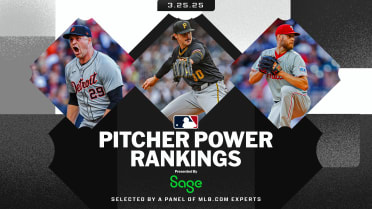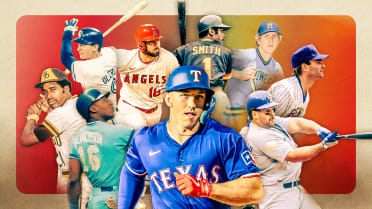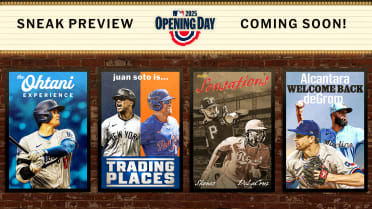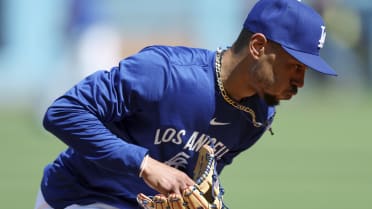One of baseball’s best traditions is getting a little summer makeover. MLB’s T-Mobile Home Run Derby has changed its rules ahead of the 2024 competition set for July 15 at Globe Life Field in Arlington on ESPN at 8 p.m. ET.
The shift isn’t quite as drastic as the one the event saw in 2015, when it changed from an “Outs” system (i.e. 10 outs per round, regardless of how quickly the pitches came) to a clock-based system. But nonetheless, this year’s Derby will look slightly different than what fans have been accustomed to in recent years. Below, we break down the new rules, and how they differ from the competition’s most recently used format.
'Knockout style' doesn’t begin until semifinals
Last year, the entire Derby was an eight-person, single-elimination bracket, with three rounds. The No. 1 seed faced the No. 8 seed in the first round, and the No. 2 seed faced the No. 7 seed, and so on, with seeds being determined by how many regular-season homers each player had hit up to that point. As such, the entire competition was “knockout style,” with any player needing to win three separate one-on-one matchups to win the overall title.
This year, there’s still an element of one-on-one showdowns, but that won’t come into play until the semifinals. This year’s first round will have no predetermined seeds, and it will instead consist of all eight hitters competing, with the top four performers advancing to the semifinals. At that point, the format will shift to No. 1 vs. No. 4 and No. 2 vs. No. 3, but those seeds will solely be determined by the number of homers each player hit in the first round, so they will have nothing to do with regular season performance.
Should there be a tie in terms of multiple players hitting the same number of home runs in the first round, the tiebreaker will be who had the longest home run hit in that round.
A pitch limit is now in place
Last year, there was no formal maximum number of pitches that a hitter could see during an individual round. It was still the case that a lead official had to notify the pitcher when he or she could throw the next pitch to the batter, based on whether it was clear that the previous batted ball would or wouldn’t result in a home run. But beyond getting that approval from the official, there was no stopping a pitcher from going as fast as he or she wanted.
This year, that’s no longer the case. The first two rounds will still be three minutes, and the final round will still be two minutes, as was the case before 2024. But now, there’s also a maximum number of pitches each hitter can see in each round. The first round and semifinals will conclude whenever three minutes, or 40 pitches, comes first (excluding the bonus period, which will be explained below). Likewise, the finals will conclude whenever two minutes, or 27 pitches, comes first, excluding the bonus period.
Bonus pitches are no longer on a timer
Last year, there was an automatic 30 seconds of extra time granted to each batter at the conclusion of each regulation period. Then, beyond that, a hitter could also earn an additional 30 seconds of bonus time -- giving him 60 bonus seconds total -- if he hit two home runs of at least 440 feet during the regulation period.
This year, the bonus pitches are different both in terms of how they are acquired, and how long the bonus period lasts. Instead of getting an automatic 30 seconds of extra time, each player now gets bonus pitches up until they record three outs within that bonus period. Furthermore, if a player hits a home run of at least 425 feet within the bonus period, then the bonus period is extended to last until the player records his fourth out in that period. But it’s no longer the case that hitting especially far home runs during the regulation period leads to extra bonus time.
So what’s still the same?
For one, the timing aspect hasn’t changed at its core. Before getting into the intricacies of the bonus rules, each of the first two rounds will last three minutes, and the final round will last two minutes, which hasn’t changed from 2023.
Additionally, the timeout rules are the same. Each batter is entitled to one 45-second timeout in each of the three regulation periods, but timeouts cannot be called during the bonus periods.
And, finally, the tiebreaker system, once the “Knockout” stage has begun, will be the same as it has been. Ties in the semifinals or finals will be broken by a 60-second swing-off with no stoppage of time or additional time added. If a tie remains after the swing-off, batters will engage in successive three-swing “swing-offs” until there is a winner.
All in all, the Derby will look slightly different than it ever has before. But with the best of the best of MLB’s power hitters taking the stage at Globe Life Field, it should still be a sight to behold for baseball fans around the world.
Cole Jacobson is a reporter for MLB.com.




